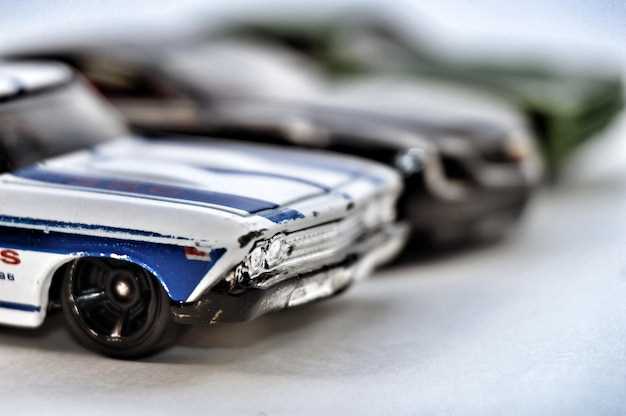
The BMW 2002 is widely regarded as a seminal model that significantly influenced the evolution of sports sedans. Launched in the early 1960s, this compact car combined performance, practicality, and style, setting new standards for what a sports sedan could be. Its lightweight construction, agile handling, and spirited engine options attracted a diverse range of drivers, from enthusiasts to everyday commuters. The 2002 didn’t just fill a niche; it created one, redefining the expectations for a sporty yet accessible vehicle.
One of the key innovations of the BMW 2002 was its adoption of rear-wheel drive and a balanced weight distribution, characteristics that became the hallmark of BMW’s engineering philosophy. This approach provided superior driving dynamics compared to its front-wheel-drive contemporaries. The marriage of driving pleasure and functionality led to a surge in interest in the sports sedan segment, inspiring manufacturers worldwide to revisit their designs and performance metrics.
Furthermore, the impact of the BMW 2002 extended beyond its engineering prowess; it also ignited a cultural movement. The model became a symbol of youthful rebellion and automotive passion in the 1970s and 1980s. As it gained popularity in motorsports, the 2002 solidified its status as not merely a vehicle but an icon. This blend of performance and accessibility has left an indelible mark on the automotive landscape, paving the way for future generations of sports sedans and firmly establishing BMW as a leader in this arena.
Key Design Innovations of the BMW 2002

The BMW 2002 revolutionized the sports sedan segment with its blend of performance and practicality. Launched in the early 1960s, this vintage car introduced several design innovations that would influence generations of automobiles.
One of the most notable features was the compact body design, which offered a balance between agility and stability. Its lightweight construction enabled improved handling, making it an ideal choice for enthusiasts. The sleek silhouette not only enhanced aerodynamics but also contributed to its timeless aesthetic.
Another key innovation was the introduction of the two-door coupe configuration. This design choice emphasized sportiness while still maintaining enough space for passengers and cargo. The rear seat design was practical without sacrificing style, appealing to a broad audience that desired both performance and convenience.
The engine positioning in the BMW 2002 played a crucial role in its dynamic handling. With a front-engine layout and rear-wheel drive, it provided an engaging driving experience. This configuration helped in distributing weight evenly, which in turn improved traction and cornering capabilities.
Furthermore, the dashboard and instrument layout of the BMW 2002 was thoughtfully designed, placing emphasis on driver-centric functionality. The clear gauges and accessible controls allowed drivers to monitor performance seamlessly, enhancing the overall driving experience.
Finally, the innovative suspension system incorporated a MacPherson strut design at the front, which contributed to a smooth ride and responsive handling. This setup was beneficial not only for spirited driving but also for everyday use, setting a standard for future sports sedans.
In summary, the BMW 2002’s key design innovations created a blueprint that many sports sedans would follow. Its successful integration of style, performance, and practicality solidified its place in automotive history as a true icon of vintage engineering.
Performance Features that Set a New Standard

The BMW 2002 emerged as a pivotal model in the evolution of sports sedans, leveraging a combination of engineering excellence and innovative design. With its lightweight construction and robust engine options, the 2002 offered a performance-oriented driving experience that was unprecedented for its time.
One of the standout features was the 2.0-liter four-cylinder engine, which delivered an impressive power-to-weight ratio. This engine not only provided spirited performance but also showcased the engineering prowess of BMW, cementing its reputation for producing dynamic and engaging vehicles. The incorporation of dual-carburetor setups further enhanced its responsiveness and acceleration, setting a new benchmark in the vintage sports sedan market.
The vehicle’s chassis was meticulously crafted, featuring a near-perfect 50/50 weight distribution. This characteristic allowed for superior handling and agility, enabling drivers to navigate corners with confidence. Coupled with an independent suspension system, the BMW 2002 was designed to deliver a smooth ride while maintaining sharp and responsive steering, contributing to a truly immersive driving experience.
Another significant innovation was the introduction of disc brakes on all four wheels, a feature that greatly improved stopping power and safety. This advancement not only ensured reliable braking performance but also reinforced the model’s sporty character, appealing to driving enthusiasts seeking a thrilling experience behind the wheel.
The blend of performance features in the BMW 2002 did not merely advance its own capabilities; it set a new standard for future sports sedans, influencing design philosophies and manufacturing practices across the industry. Producers were challenged to enhance their offerings, leading to a wave of competition that ultimately benefitted consumers and elevated the segment as a whole.
Legacy of the BMW 2002 in Modern Sports Sedans
The BMW 2002 is often regarded as a cornerstone in the evolution of the sports sedan segment. Its impact on automotive design and engineering transcends its vintage status, serving as a benchmark for modern manufacturers. The lightweight construction, balanced handling, and spirited engine performance of the 2002 set a standard that contemporary sports sedans strive to achieve.
Modern sports sedans have adopted the essence of the BMW 2002 by emphasizing a harmonious blend of performance and everyday usability. Key characteristics, such as rear-wheel drive dynamics and a well-tuned chassis, can be traced back to the principles established by the 2002. Automakers now prioritize driving pleasure, reflecting BMW’s philosophy that was first popularized by this iconic model.
Additionally, the minimalist and purposeful design elements of the 2002 can be seen in the sleek profiles of current sedans. Manufacturers have drawn inspiration from its clean lines and compact dimensions, ensuring that modern iterations maintain the sporty aesthetic while incorporating advanced technologies.
The BMW 2002 also highlights the importance of community and culture around performance vehicles. Its legacy continues to inspire car clubs and events, uniting enthusiasts who cherish both the vintage charm of the original and the dynamic capabilities of today’s offerings. This cultural resonance reinforces the model’s significance in shaping not only vehicles but also a lifestyle centered around driving enjoyment.
In conclusion, the legacy of the BMW 2002 is a ubiquitous presence in modern sports sedans, influencing numerous aspects from engineering to design. As automakers strive to capture the spirit of this vintage icon, the 2002 remains a guiding light in the pursuit of automotive excellence.
